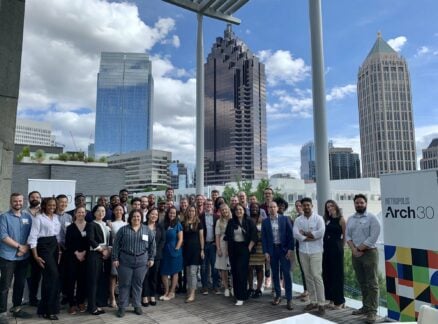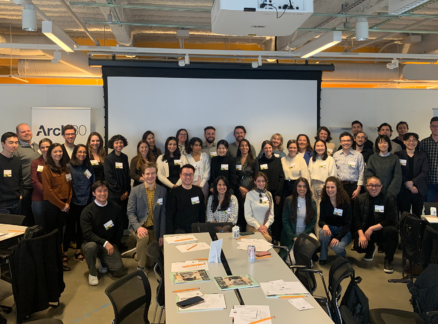May 1, 2011
The New Piazza
A boldly modern cultural center invigorates an ailing Italian town—and could serve as a model for the entire country.
ARCHITECTS
Paola Giaconia
www.paolagiaconia.com
DAP Studio
www.dapstudio.com
Ranica,
Italy
A few years ago, the medieval town of Ranica, Italy, was in desperate need of a civic makeover. Its population had outgrown the local kindergarten, the town’s one library was cramped and shoddy, and there was no piazza to speak of—or in. A municipality-sponsored design competition sought to redress all these wrongs in one fell swoop, commissioning a laboratory for education and information that would also act as a social and cultural hub. The result, which opened last year, is essentially a new kind of piazza. “It was conceived as a catalyst for urban life, where people can meet and where citizens can reinforce their sense of belonging to their territory,” says the architect and scholar Paola Giaconia, who designed the center with Milan’s DAP Studio.
The 19,500-square-foot building—the city’s first large piece of contemporary architecture—has crisp right angles, bold horizontal lines, and a wholly modern persona, but this precision is softened with a diaphanous polycarbonate facade tinted with colors ranging between pink and blue. Elsewhere, the architects use translucency (on the crowning volume) and transparency (at the street level) to open the building to its surroundings. “We wanted a material that could allow for the silhouettes of people inside the building to be revealed outside,” says Giaconia, who studied at SCI-Arc and worked at Morphosis before establishing her Florence-based practice in 2001. “This triggers the curiosity of passersby, and I think it actually attracts people into the building.”
The center’s two stacked boxes hug an interior courtyard that draws in natural light; a raised wooden plinth there provides gathering space for chatting acquaintances and loitering students. Inside the building, an auditorium acts as an additional public arena. But the most successful space is probably the double-height library, whose sober white interior communicates unfussy functionality and returns the visitor’s attention to the book.
The building aims to reanimate the historical and social fabric of the town. But the architects also envisioned it as a beacon of another sort, a signal of optimism at a time of great controversy. Across Italy, cultural institutions, including museums, archaeological sites, and libraries, have been struggling under the strain of longstanding, severe funding cuts by Prime Minister Silvio Berlusconi’s conservative government. Though the European Union has experienced austerity across the board, Italians feel that they have taken a harder hit. “This makes it even more significant that a small municipality decided to invest in a cultural institution with so much energy and such attention to quality,” Giaconia says. “A public building affects so many users that, as architects, we felt particularly accountable for all our design choices.”





